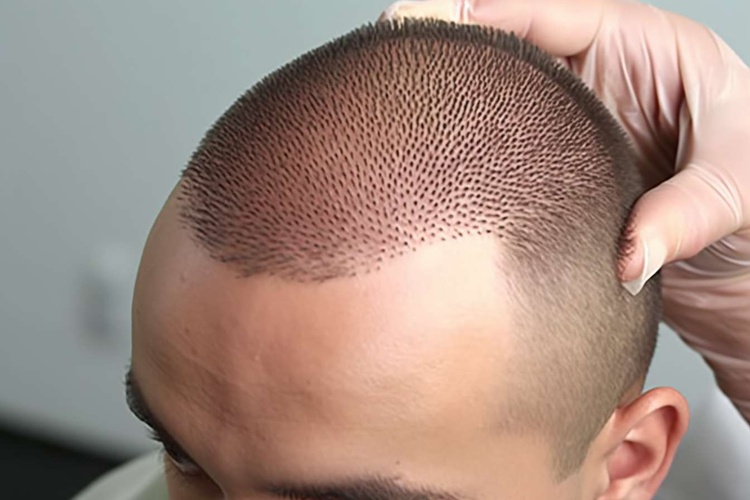Modern Hair Transplantation: A Practical Restoration Guide
Discover how modern hair transplantation delivers lasting hair restoration through advanced surgical methods, clinical research, and evolving technologies. This comprehensive overview explains FUE and FUT techniques, eyebrow and facial transplants, expected recovery timelines, candidacy factors, and how to compare providers so you can make informed decisions about hair loss treatment.

How Clinical Research Shapes Hair Restoration
Clinical research has been instrumental in refining hair transplant procedures. Ongoing trials and studies have improved surgical protocols, reduced complications, and optimized patient outcomes. Areas of active investigation include stem cell approaches to stimulate hair growth, improved graft survival methods, and automated extraction and implantation systems that increase precision and reduce procedure time. These developments have translated into more reliable, natural-looking results and better post-operative care routines.
Expanding Uses: Beyond Scalp Restoration
Hair transplantation now covers more than just scalp balding. Surgeons routinely perform eyebrow restoration, beard and mustache transplants, and body hair grafting for patients lacking sufficient scalp donor hair. Eyebrow transplants, in particular, are a popular choice for those affected by over-plucking, trauma, scars, or medical conditions that cause thinning. Techniques are adapted to the unique direction and density of eyebrow hairs to recreate a natural contour and appearance.
Cosmetic Benefits and the Stages of Recovery
The aesthetic advantages of hair transplantation go beyond changing one’s appearance. Many patients report significant boosts in self-esteem and social confidence after successful procedures. Recovery typically unfolds in distinct stages: the first one to two weeks focus on wound healing and avoiding infection, while transplanted hairs may shed before regrowing. Visible, long-term improvement usually appears gradually, with the bulk of final results evident between 12 and 18 months as grafts mature and hair cycles normalize.
During recovery, patients follow tailored aftercare instructions—such as gentle scalp cleaning, temporary activity restrictions, and medications to manage swelling or discomfort—to protect grafts and promote healthy regrowth. Understanding the natural hair growth cycle helps set realistic expectations, since immediate density is uncommon and patience is essential.
Assessing Medical Eligibility and Suitability
Not every person with hair loss is an ideal candidate for transplantation. Careful assessment by a qualified clinician is critical. Evaluations typically examine overall health, patterns and causes of hair loss, scalp laxity, and the quantity and quality of donor hair. Certain medical conditions, such as uncontrolled diabetes or active scalp infections, may delay or rule out surgery. Additionally, progressive hair loss patterns need strategic planning; surgeons may combine transplantation with medical therapies to preserve remaining hair and achieve balanced, long-term outcomes.
A thorough consultation will also review hair texture, color contrast between hair and skin, and expectations—factors that influence the choice of technique and the anticipated cosmetic effect.
Techniques: FUE, FUT and Combined Approaches
Two core surgical methods dominate modern practice: Follicular Unit Extraction (FUE) and Follicular Unit Transplantation (FUT). FUE involves harvesting individual follicular units from a donor area, producing minimal scarring and faster recovery. FUT removes a thin strip of scalp to harvest grafts, which can yield a higher graft count in a single session but results in a linear scar. Many clinics offer combined or staged approaches to maximize donor resources while minimizing visible traces.
Advances such as robotic-assisted extraction and refined manual techniques aim to increase graft survival, reduce trauma to follicles, and tailor implantation angles to replicate natural hair direction.
| Provider Type | Treatment Options | Key Features |
|---|---|---|
| Specialized Clinics | FUE, FUT, Robotic Assistance | Focused expertise, personalized planning |
| Medical Centers | Surgical Transplants, Hospital Support | Comprehensive medical oversight, multidisciplinary care |
| Aesthetic Clinics | Combined Therapies, Non-surgical Adjuncts | Cosmetic-focused solutions, integrated aesthetic services |
Prices, rates, or cost estimates mentioned in this article are based on the latest available information but may change over time. Independent research is advised before making financial decisions.
Choosing a Provider and Setting Expectations
Selecting the right clinic involves more than price comparison. Look for board-certified surgeons with documented experience, before-and-after galleries, transparent patient outcomes, and clear post-operative protocols. Ask about graft survival rates, expected density, potential need for multiple sessions, and how the clinic manages complications. A realistic discussion about what can and cannot be achieved helps align expectations and improve satisfaction.
The Role of Adjunct Therapies and Future Directions
Hair restoration is increasingly multimodal. Many patients benefit from combining surgery with medical treatments—such as topical minoxidil, oral medications, or platelet-rich plasma (PRP)—to support graft survival and retain native hair. Research into regenerative solutions, including stem cell therapies and growth-factor treatments, may offer additional options in the future as evidence matures.
Final Considerations
Hair transplantation offers a durable solution for many types of hair loss, but success hinges on thorough evaluation, appropriate technique selection, and realistic expectations. Advances driven by clinical trials and technological innovation have improved outcomes, expanded indications, and made recovery more manageable. If you are considering restoration, schedule consultations with qualified specialists, review case histories, and discuss both surgical and non-surgical strategies to create a comprehensive, personalized plan.
This article is for informational purposes only and should not be considered medical advice. Please consult a qualified healthcare professional for personalized guidance and treatment.





